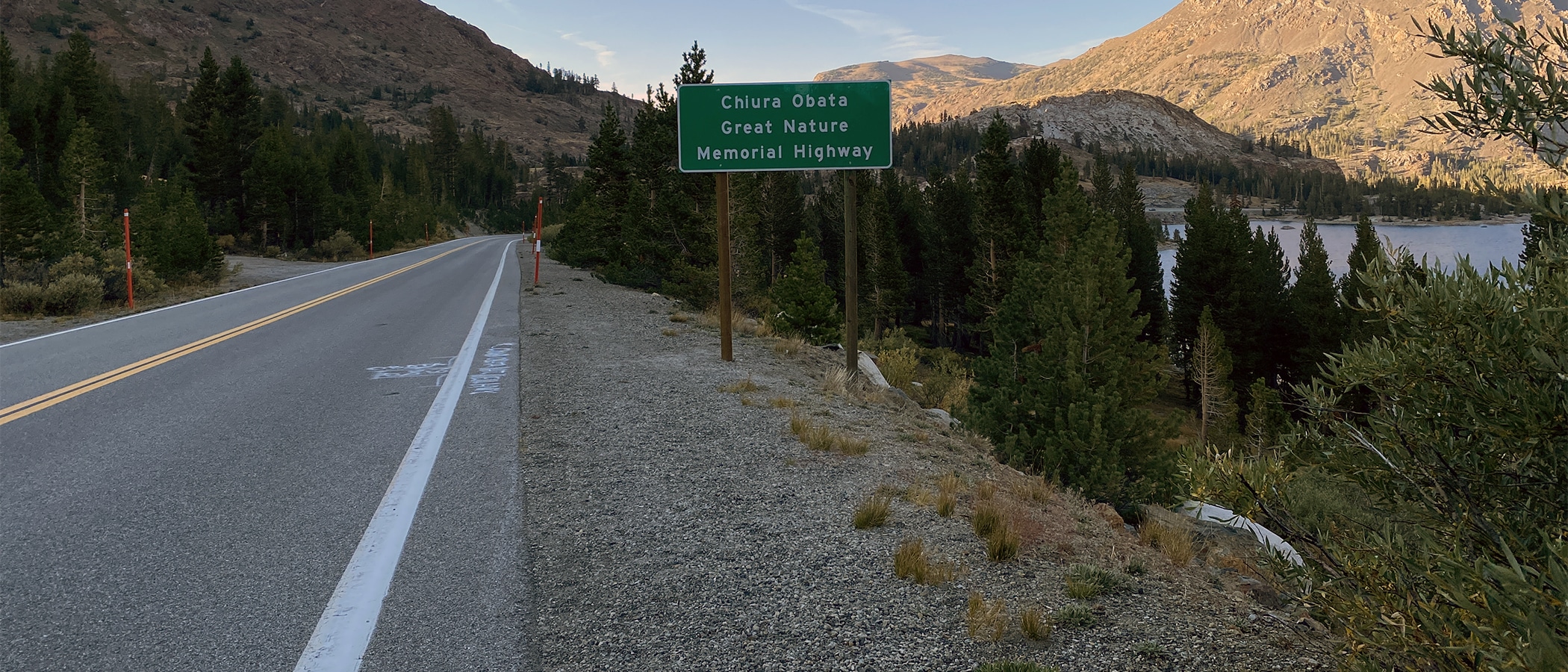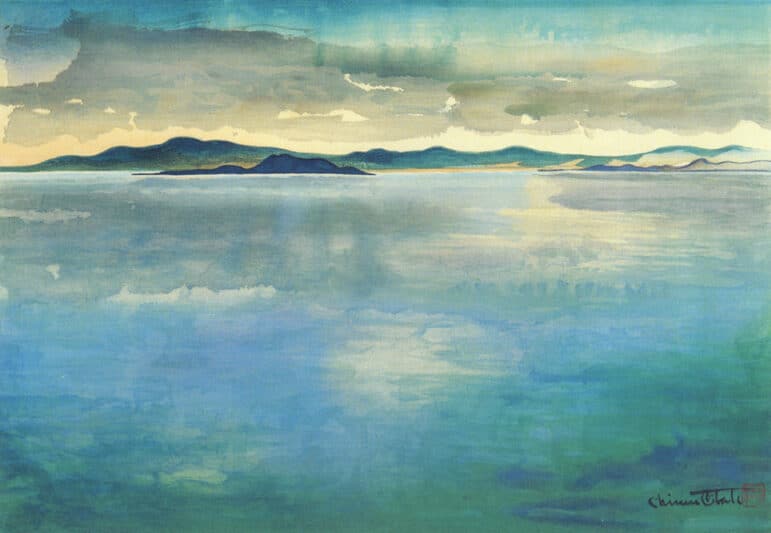
Recently, locals and visitors alike have noticed two new signs along a high-elevation section of Tioga Pass (Highway 120 West) near the eastern entrance to Yosemite National Park. On August 29 a section of the road was dedicated the Chiura Obata Great Nature Memorial Highway in honor of the artist’s remarkable life and celebrated work.
The road dedication proposal was initiated by Robert Hanna, a descendant of conservationist John Muir and a champion of Mono Lake. Assemblymember Frank Bigelow introduced Assembly Concurrent Resolution No. 112 to designate the highway, which was passed by the California Legislature in September 2020. The Rafu Shimpo, Los Angeles Japanese Daily News, covered the resolution last year.
The text of the resolution summarizes Obata’s life and is excerpted below:
“Chiura Obata was born on November 18, 1885, in Japan and raised in the city of Sendai; at seven years of age, he began his formal training in the art of sumi-e, Japanese ink and brush painting; at fourteen years of age, Obata began an apprenticeship with a master painter in Tokyo, and in 1901, he received a prestigious art award in Tokyo…
“Upon coming to the United States, Obata not only was the recipient of intense racial epithets; he was even hit and spat upon by people on the streets of San Francisco simply because of his ethnicity, but he also encountered the institutionalized racism that existed in many laws of the time that restricted the rights of Asian-born immigrants like himself, including prohibitions from owning land and becoming a United States citizen…
“Obata became an avid baseball player, playing many games at Golden Gate Park, and was one of the founders of the Fuji Club, the first Japanese American baseball team on the American mainland…
“In 1921, Obata cofounded the East West Art Society in San Francisco with other American, Russian, Chinese, and Japanese artists to promote a uniting of Asian and Western art traditions…
“In 1927, Obata made a six week camping trip to Yosemite and the Sierra Nevada Mountains that proved to be a defining moment in his professional life, about which he would later say, ‘This experience was the greatest harvest for my whole life and future in painting…’
“Obata’s art is infused with his reverence for nature, which he viewed as a powerful spiritual force; he thought of nature as dai-shizen, or Great Nature, reflecting his belief that it is an essential source of inspiration and peace for all human beings…
“In 1932, Obata began his career as an influential educator, teaching in the art department at the University of California, Berkeley for nearly 20 years…
“In April 1942, Obata and his family were sent to the Tanforan Racetrack near San Francisco and eventually to the Topaz War Relocation Center in central Utah; firmly believing in the healing power of art, in less than a month he and his fellow artists were able to create an art school with over 600 students…
“While Obata was director of the Topaz Art School, he continued to paint images of life in the camp as well as the beauty he saw in the desert landscape; even in the face of such confinement, Obata proved to be a figure of peace and resilience…
“In 1943, Obata and his family were released from the relocation center in Topaz, Utah, and returned to California in 1945 at the end of World War II; after 1945, Obata continued to visit Yosemite and the eastern Sierra Nevada Mountains to paint his landscapes…
“In 1954, two years after the United States government allowed Japanese immigrants to become citizens of the United States, Obata and his family became naturalized American citizens…
“In that same year, Chiura and his wife, Haruko Obata, led the first of the ‘Obata Tours’ to Japan, introducing many Americans to Japanese arts, architecture, and culture; the tours fostered understanding through the arts between the two countries that had previously been at war…
“From 1955 to 1970, until he was 85 years of age, Obata traveled throughout California, giving lectures and demonstrations on Japanese brush painting and in 1965, in Japan, Obata received the Emperor’s Award, the Order of the Sacred Treasure, 5th Class, in recognition of his efforts to spread cultural understanding…
“Obata’s life and work have been celebrated and exhibited throughout the world, and his legacy in connection to our National Parks remains an inspiration for all Californians; now, therefore, be it
“Resolved by the Assembly of the State of California, the Senate thereof concurring, That the Legislature hereby designates the portion of State Route 120 from post mile R0.898 to post mile R4.766 in the County of Mono as the Chiura Obata Great Nature Memorial Highway.”
Top photo by Elin Ljung.


What a great tribute to a very talented and humble man. Well deserved.
Delighted to see this. His art is so beautiful and so evocative of our beloved Sierra.